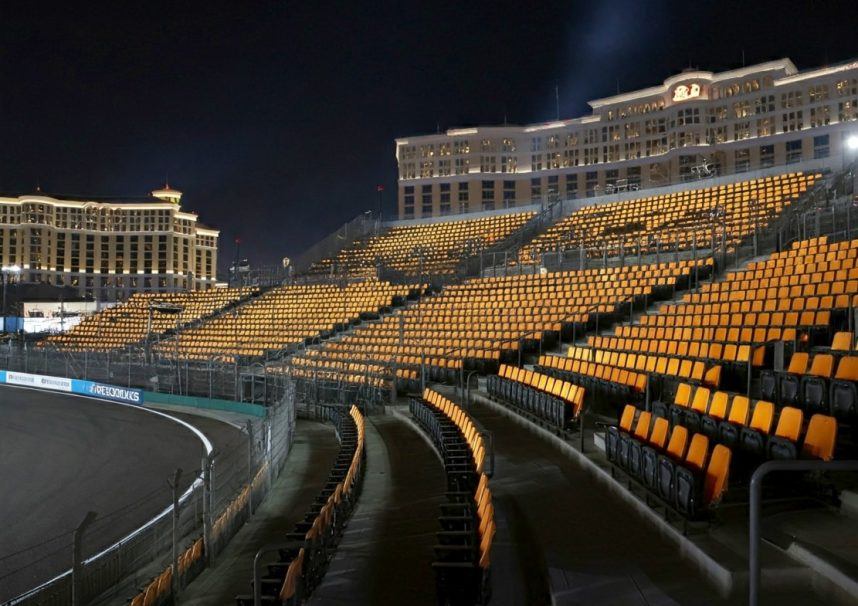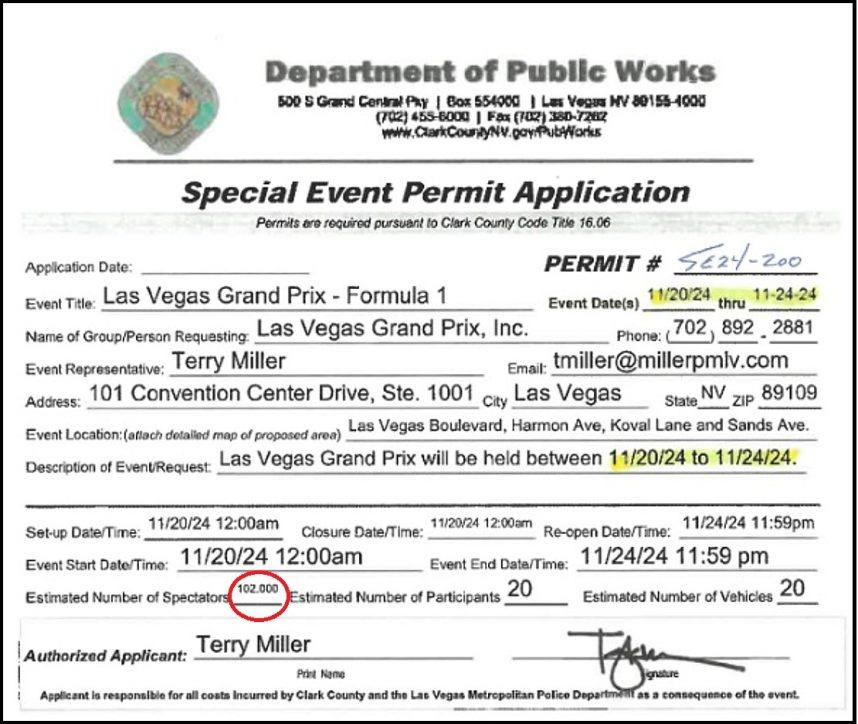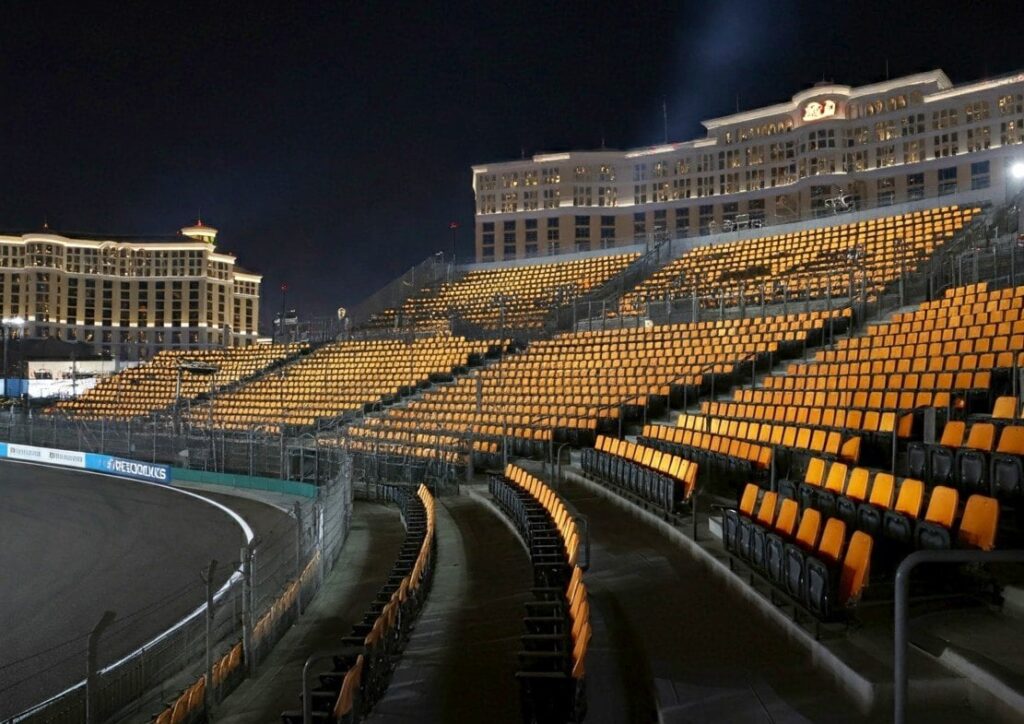Posted on: November 15, 2024, 12:52h.
Last updated on: November 15, 2024, 01:43h.
Either attendance for the second Las Vegas Grand Prix (LVGP) will be drastically down this year, or F1 just admitted to inflating last year’s attendance figures — perhaps to help overstate the race’s economic impact on the Strip.

According to LVSportsBiz.com, which broke this story earlier this week, F1 estimated in its Clark County permit application that 102K people will watch this year’s race, and all lead-up events, in the five days between November 20-24.
According to figures provided by F1 to the media last year, that’s fewer than a third of the 315K spectators who watched between Nov. 16-18, 2023, which is a span of two fewer days.
Speculating Spectators
During race owner Liberty Media’s third-quarter earnings call last week, LVGP CEO Renee Wilm admitted that “aggregate ticket revenue will be down from what we originally budgeted in Q1.”
This is presumably because F1 needed to reduce initial prices to meet the demand.

According to VegasSlotsOnline.com, race organizers dropped the prices of its three-day West Harmon Grandstand package earlier this month from $1,200 to $672 before taxes and fees. In addition, according to a media release from the reseller app Gametime, top-tier packages have been going for an average of $2,689, vs. $4,624 last year.
Ticket prices for F1’s VIP packages were originally set to start at $1,600 this year, which was already down from $2,000 last year.
But cheaper seats don’t equate to fewer seats. And, as expected, F1 has declined to answer whether its estimates last year were intentionally overstated or it put way fewer tickets up for sale this year.
Impact Suspect
Last year, Liberty Media CEO Greg Maffei claimed that F1 brought a positive economic impact to Las Vegas of $1.7 billion by transforming the Strip into its own private racetrack.
However, casino industry observers noted that, even if this estimate were accurate, the benefit was experienced only by MGM Resorts International and Caesars Entertainment — which together, operate 17 of the Strip’s 42 casino resorts — as well as Wynn Resorts and the Venetian.
In stark contrast, the rest of the casino resorts and other businesses on the Strip — as well as those in downtown Las Vegas — are believed to have suffered severe negative impacts because even more tourists avoided Las Vegas than normally did during the traditionally slow week before Thanksgiving.
Furthermore, those tourists who did come, oblivious to the race, found it impossible to get anywhere near the Strip to spend money on gambling, dining, or entertainment.
Even Clark County itself admitted losing nearly half a million last year. Though the race generated $3.8 million in tax revenue, the county’s staff members spent more than 17K hours performing race-related work. The bill for this cost $4.4 million, leaving the county (read: taxpayers) $463K in the red.
Because F1’s agreement with Clark County runs for three years, many are speculating that 2025 could be the Euro-centric race’s final year in Las Vegas.




